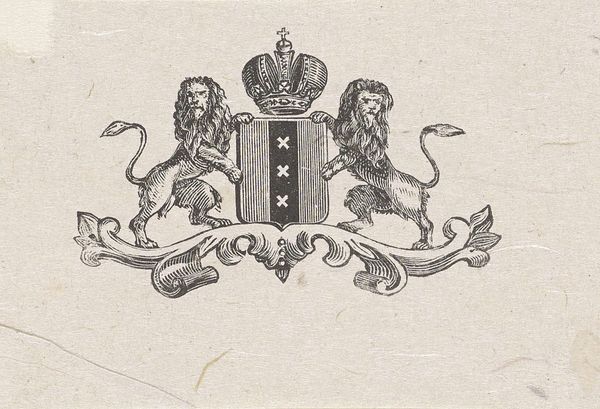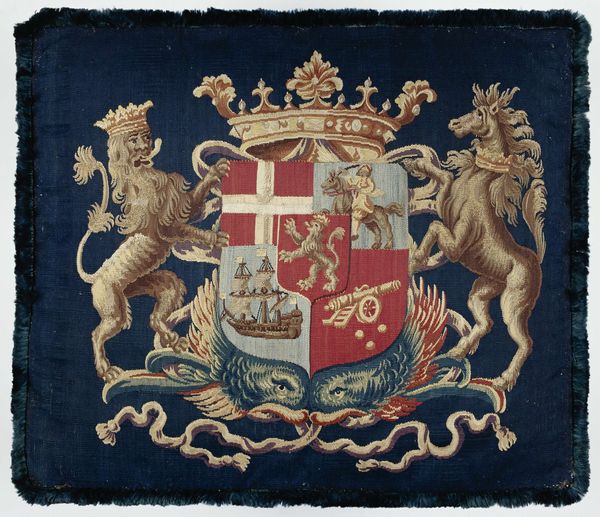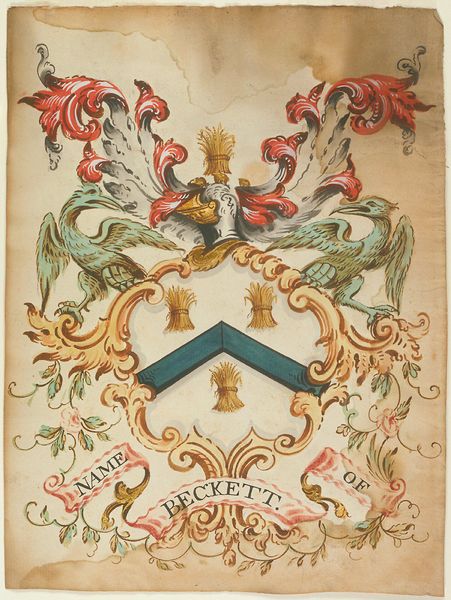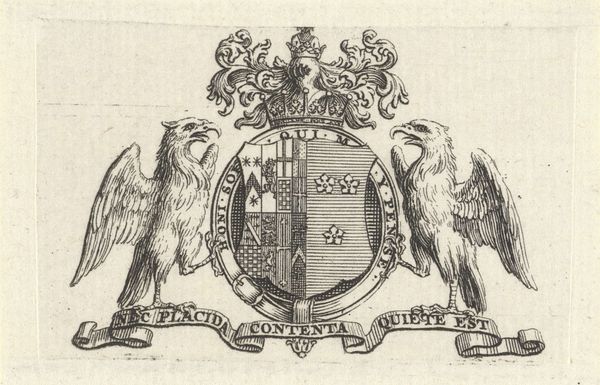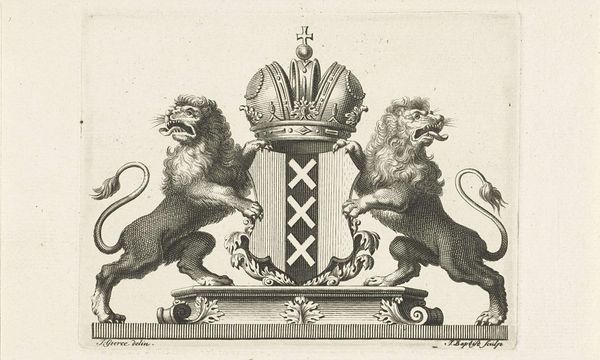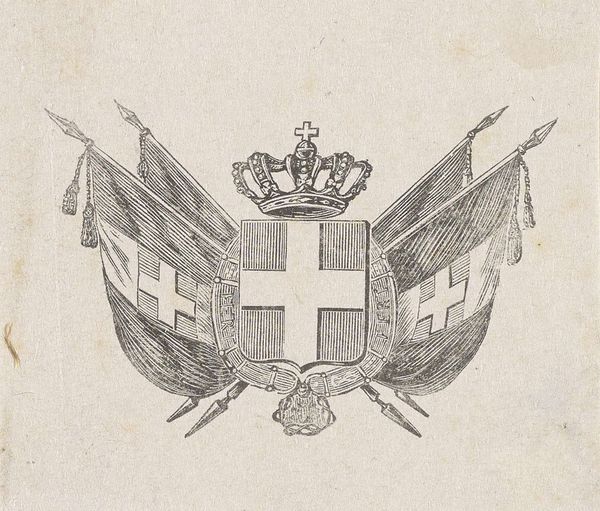
drawing, graphic-art, coloured-pencil, print, paper, ink, engraving
#
drawing
#
graphic-art
#
toned paper
#
coloured-pencil
# print
#
paper
#
ink
#
coloured pencil
#
sketchbook drawing
#
watercolour illustration
#
decorative-art
#
engraving
Dimensions: height 343 mm, width 435 mm
Copyright: Rijks Museum: Open Domain
Editor: So, here we have "Wapen van het Koninkrijk der Nederlanden, 1815," or Coat of Arms of the Kingdom of the Netherlands, 1815 by V. Labargé, created using drawing, graphic art, coloured pencil, print, paper, ink, and engraving. It strikes me as incredibly assertive, even regal. What symbolic significance do you find most compelling in this image? Curator: It’s the heraldic lion, really, isn't it? Throughout history, the lion embodies courage, nobility, and royalty – virtues often associated with a nation's identity and leadership. This image strikes me in that there is almost an iconic or even spiritual component with the importance and positionality given to the animals on each side, framing it, making it more powerful. Do you notice the specific accoutrements, the sword and crown, and how they interact? Editor: Yes, the lion holding a sword, that really amps up the aggression, right? And of course, it's crowned – power elevated even further. How does this connect with the Netherlands in 1815? Curator: Well, 1815 marked the establishment of the Kingdom of the Netherlands after the Napoleonic Wars. This coat of arms served as a visual representation of the newly restored Dutch sovereignty. Think of symbols acting as anchors – stabilizing the collective psyche amidst change and potential chaos. Why the colour usage, do you suppose? Editor: I see how the lion is at once assertive but then can also act as reassurance during change, interesting. Perhaps the colours refer back to the House of Orange, reasserting dynastic connections? Curator: Precisely! Visual elements are rarely arbitrary; colour and symbolism are deeply intertwined. The return to the orange hue reinforced a link to the past. Symbols have the power to construct and reconstruct the narrative. Editor: So, by understanding these layers, the image shifts from being merely decorative to a powerful statement of national identity and continuity? I didn’t appreciate the layers! Curator: Absolutely. Each element plays its part in communicating cultural memory. And hopefully now it makes a bit more sense to you.
Comments
No comments
Be the first to comment and join the conversation on the ultimate creative platform.

